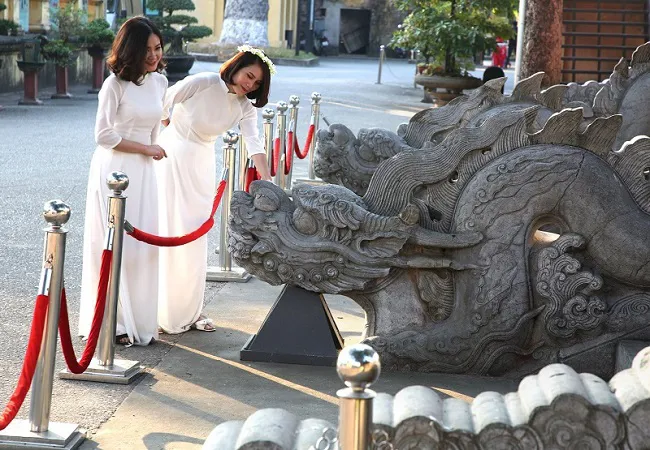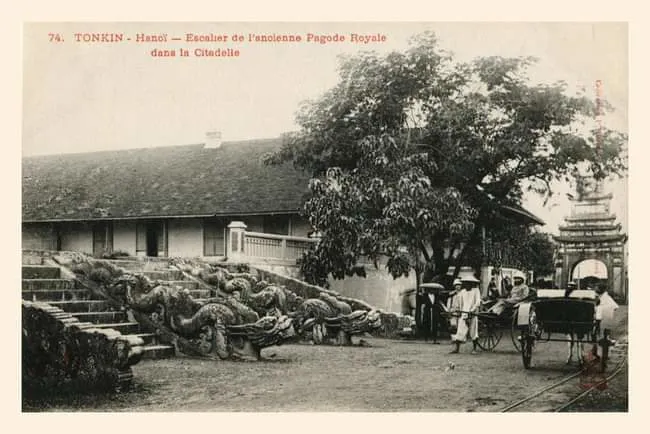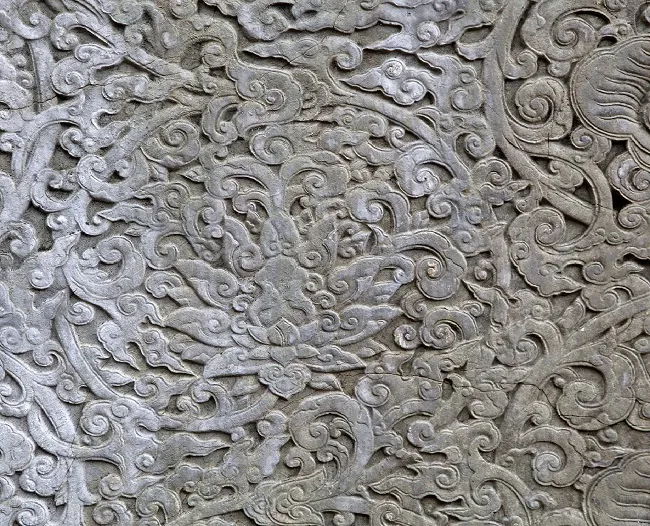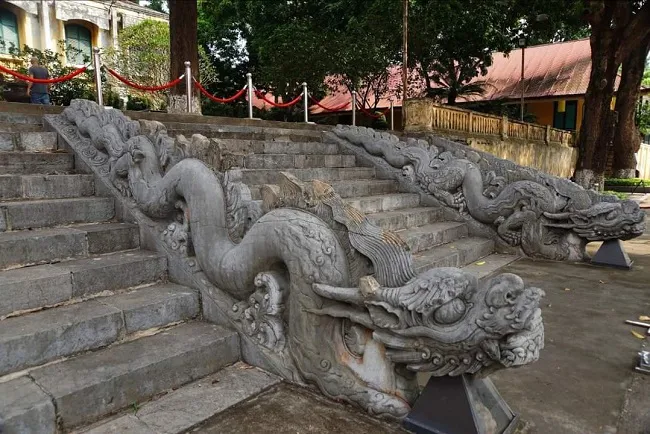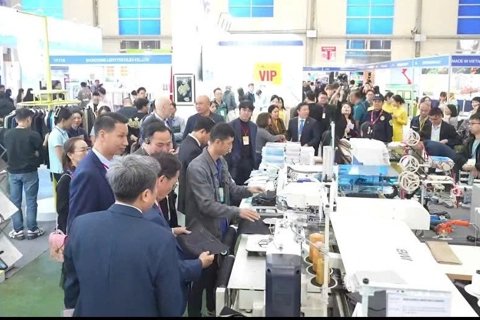Kinh Thien staircase - typical architecture of Vietnam’s middle age
Hanoi has planned to turn Thang Long Imperial Citadel into the most beautiful heritage park, a special destination of the capital city.
Kinh Thien Palace was built in 1428 during King Le Thai To’s reign (1428-1433) and completed in King Le Thanh Tong’s (1460-1497). It was the most important palace where the court held the most solemn rituals, welcomed foreign emissaries, and discussed affairs of state.
| The sophisticated architecture and sculpture of Kinh Thien Palace's staircases. Photo: Bui Van Ha/ Thang Long Imperial Citadel |
Kinh Thien Palace was built in 1428 during King Le Thai To’s reign (1428-1433) and completed in King Le Thanh Tong’s (1460-1497). It was the most important palace where the court held the most solemn rituals, welcomed foreign emissaries, and discussed affairs of state.
The palace was destroyed in 1886, only the foundation and the staircase remain today as the most important heritages in the Thang Long Imperial Citadel. The pair of stone dragons railing the staircase was a masterpiece of art, representing the typical sculpture under the Le Dynasty.
Located in the south of the palace, the staircase was built with large slates with ten steps. There are four stone dragons divided the steps into three alleys, forming the Royal staircase that the King walked in the middle. The steps were 13.7 meters long, 4.45 meters wide and 2.1 meter high with the two stone dragons carved in 1467 which were still relatively intact.
| The stone dragons of Kinh Thien Palace at Thang Long Imperial Citadel in the early 20th century. Photo collector: Dao Duy Tien |
The stone dragons and decorative patterns on the staircase are unique, which are not found in other relics in the same category of the same period. Dragons have their head held high and their body curved into many arcs. On their back, there is a long winding fin looking like fire flames.
There is also stone relief of clouds that turn into a dragon in this staircase, a popular decorative pattern of the Le Dynasty, especially on stone steles and pottery products.
Besides, the image of the lotus also prolific here, showing the influence of Buddhism.
However, different from the simple lotus in the sculpture of the previous dynasties, this one is carved in a more complicated and sophisticated way in combination with the image of peony.
| The stone dragons and decorative patterns on the staircase are unique, which are not found in other relics in the same category of the same period. Photo: E.F.E.O |
Furthermore, lotus leaves are also carved with more detail. With an area of 4.6 squared meters, it is regarded as one of the country’s largest and most beautiful stone sculptures with ancient decorating patterns.
In the north of Kinh Thien Palace, there was another staircase of seven steps, smaller than the main one in the south. The two rails of the staircase are in the forms of dragons carved under the Le Trung Hung Dynasty’s time of the 17th-18th century. The dragons were 3.4 meters long with seven curves. The two sides of the handrails were also decorated with lotus, waves, fire, and clouds.
| The sophisticated patterns were carved under the Le Trung Hung Dynasty’s time of the 17th-18th century. Photo: Thang Long Imperial Citadel |
The foundation and staircase are meager relics of palace architecture under the Le Dynasty that remain to this day, partly reflecting the grand scale of Kinh Thien Palace in the past.
Nowadays, space has become a “double” relic for the two eras. Kinh Thien Palace of Thang Long ancient imperial citadel and the Headquarter of General Commander of the Vietnam People’s Army, an important relic of modern Vietnamese history. It is also where cultural events take place regularly such as exhibitions and art shows that attract a large number of visitors.
| The dragons are still relatively intact today. Photo: Thang Long Imperial Citadel |
Since November 2004, when it was officially opened to visitors, the palace has become one of the most interesting places in the city.
The main staircase of Kinh Thien Palace was recognized as a National Treasure from December 2020.
Recently, Hanoi has planned to turn Thang Long Imperial Citadel into the most beautiful heritage park, a special destination of the capital city and the restoration of Kinh Thien Palace will be a major task in the coming time.

